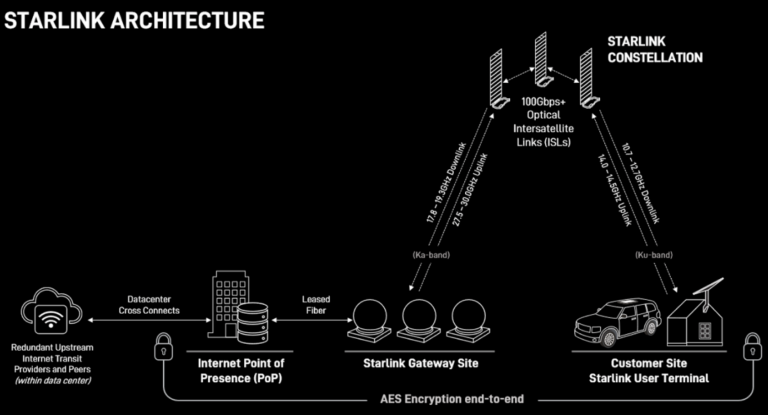
60 GHz to 90 GHz
The waveguide E band is the range of radio frequencies from 60 GHz to 90 GHz in the electromagnetic spectrum, corresponding to the recommended frequency band of operation of WR12 waveguides. These frequencies are equivalent to wavelengths between 5 mm and 3.333 mm.Extremely high frequency is the International Telecommunication Union designation for the band of radio frequencies in the electromagnetic spectrum from 30 to 300 gigahertz (GHz). It lies between the super high frequency band and the far infrared band, the lower part of which is the terahertz band.
The E-Band Frequency: Navigating Uncharted Waters in Commercial Use
In the swiftly evolving landscape of wireless communication, the commercial deployment of E-band frequencies represents a monumental leap forward. These frequencies, lying in the extremely high frequency segment of the electromagnetic spectrum, offer unprecedented data transmission speeds and capacity, poised to revolutionize internet connectivity globally. Yet, as we stand on the cusp of this technological renaissance, concerns about the potential health implications of E-band frequencies have emerged. These concerns primarily revolve around the effects of these high-frequency electromagnetic fields on bioelectric potentials, the electrical phenomena intrinsic to biological entities.
Understanding Bioelectric Potentials
Bioelectric potentials are electrical charges and currents that are fundamental to the physiological processes of living organisms. They play a critical role in everything from cellular communication to the functioning of the nervous system. The concern is that exposure to E-band frequencies, without a comprehensive understanding of their impact, could disrupt these bioelectric processes, leading to unforeseen health consequences.
The Rush to Commercialize E-Band Frequencies
The commercial appeal of E-band frequencies is undeniable. With the promise of delivering fiber-like speeds wirelessly and accommodating the ever-growing demand for data, the push towards their commercial use has gained significant momentum. However, this rush has raised valid concerns regarding whether adequate research has been conducted to understand and mitigate potential risks associated with exposure to these frequencies.
The State of Research on E-Band Frequencies and Health
While there is extensive research on the health effects of lower-frequency electromagnetic fields, such as those used in mobile phones and Wi-Fi, the specific research on E-band frequencies and their impact on bioelectric potentials remains sparse. The challenge lies in the novel nature of these frequencies for commercial use and the complexity of studying their biological interactions.
The Need for Precautionary Measures
In light of these concerns, it becomes imperative to adopt a precautionary approach. This would involve conducting thorough research to understand how E-band frequencies interact with biological systems, particularly concerning bioelectric potentials. Until a clear understanding is achieved, it would be prudent to develop and implement guidelines and safety standards that minimize exposure and potential risks.
Mitigating Potential Risks
Mitigating the potential risks associated with E-band frequencies involves several key steps:
- Research: Investing in comprehensive studies to explore the effects of E-band frequencies on bioelectric potentials and overall health.
- Standards and Guidelines: Developing rigorous safety standards and exposure guidelines based on the latest research findings.
- Technology Design: Innovating in the design of devices and infrastructure to minimize unnecessary exposure and maximize safety.
- Public Awareness: Educating the public and stakeholders about the potential risks and safety measures associated with E-band frequencies.
- Monitoring and Evaluation: Continuously monitoring the health impacts of E-band frequency exposure and updating guidelines as new information becomes available.
Looking Forward
As we venture into the uncharted territory of E-band frequency use in commercial applications, it is crucial to balance the potential benefits with the need to understand and mitigate any risks. The promise of E-band frequencies to transform wireless communication is immense, but so is the responsibility to ensure that this technological leap does not come at the expense of public health. By investing in research, establishing robust safety standards, and designing technology with safety in mind, we can navigate these uncharted waters with caution and care, ensuring that the future of wireless communication is both innovative and safe.
Technological Advancements and Increased Capacity
Starlink’s leap into E-band frequencies, specifically between 71 and 76 GHz for communication from space to Earth and 81 to 86 GHz from Earth to space, marks a significant technological advancement. The use of these extremely high-frequency bands allows for a substantial increase in data throughput and efficiency. Compared to traditional cellular networks, including 5G, which primarily operate below 6 GHz with some extensions into the mmWave bands (up to around 40 GHz), the E-band frequencies offer a much higher capacity. This is pivotal for managing the massive data demands of global internet connectivity, enabling SpaceX to promise four times the capacity per satellite compared to earlier iterations. This enhancement directly addresses congestion issues, promising faster speeds and more reliable connections even during peak usage times.
Implications and Efficiency
The efficiency gains from utilizing E-band frequencies come with trade-offs. High frequencies have shorter wavelengths, which can carry more data but are more susceptible to attenuation from atmospheric conditions, such as rain or fog. This necessitates strategic placement of ground stations to ensure uninterrupted service. Despite these challenges, the efficiency and capacity gains are critical for scaling satellite internet services to meet global demands, offering a compelling alternative to terrestrial cellular and fiber networks.
Potential Health Risks
Concerns about the health risks associated with living near Earth-based stations facilitating satellite communications arise, drawing parallels to the ongoing debate around cellular towers. The primary concern with both E-band frequencies and cellular frequencies (including 5G) revolves around non-ionizing radiation exposure. Current research suggests that non-thermal effects of high-frequency radiation are minimal, but the scientific community continues to study long-term exposure effects. The International Commission on Non-Ionizing Radiation Protection (ICNIRP) guidelines serve as a benchmark for safe exposure levels, which are designed to protect against known harm based on thermal effects.
State of Research on Non-Thermal Health Risks
The research on non-thermal health risks associated with E-band frequencies and other high-frequency radiation used in satellite and cellular communications is ongoing. There are gaps in knowledge, particularly regarding long-term exposure and the potential cumulative effects of exposure from multiple sources. The transition to higher frequencies in telecommunications underscores the need for continued research to understand and mitigate any health implications fully.
The evolving research on the biological effects of non-ionizing radiation, particularly in the context of RF radiation and its non-thermal interactions, is reshaping our understanding of the potential health risks associated with cell phone usage and other wireless technologies. Studies and initiatives like DARPA’s RadioBio, along with innovative treatments such as TheraBionic and the Oncomagnetic device, provide compelling evidence that RF radiation can exert profound biological effects beyond mere heating. These findings challenge the traditional paradigm that non-ionizing radiation is only harmful insofar as it can cause thermal damage.
Non-Thermal Biological Interactions
The distinction between thermal and non-thermal effects is crucial. Thermal effects relate to the heating of biological tissue, which has been the primary concern of safety standards. Non-thermal effects, however, involve biological changes that occur without significant heating. These include resonance effects, disruption of cellular signaling, and modulation of the immune system, which can happen at power levels far below those emitted by cell phones and other wireless devices. Such interactions suggest that RF radiation can influence biological processes in ways previously unappreciated, necessitating a reevaluation of our understanding of safety and risk.
Revisiting Research on Health Risks
The body of research indicating potential health risks from cell phone-level electromagnetic radiation, including studies like Interphone, Hardell, CERENAT, and the extensive work conducted by the U.S. National Toxicology Program, underscores the complexity of assessing these risks. These studies suggest an association between RF radiation exposure and various health outcomes, including cancer. However, translating these findings into concrete safety standards has been challenging due to methodological differences, variability in exposure levels, and evolving technology.
Therapeutic Applications Challenging Conventional Wisdom
Therapeutic applications, such as TheraBionic’s treatment for inoperable liver cancer and the Oncomagnetic device’s approach to treating gliomas, exemplify the potential for RF radiation to be harnessed for beneficial medical interventions through non-thermal mechanisms. These treatments, operating at power levels significantly lower than typical cell phone emissions, demonstrate that RF radiation can have specific, targeted biological effects, further complicating the narrative around RF radiation safety.
Policy and Public Health Implications
The emerging understanding of RF radiation’s non-thermal effects has profound implications for public health policy and safety standards. Current guidelines, primarily based on preventing thermal damage, may need to be revisited to consider the full spectrum of potential biological interactions. This could lead to more nuanced recommendations regarding wireless device use, development of new technologies, and public health guidelines that better reflect the latest scientific findings.
Future Research Directions
Addressing the remaining gaps in our understanding of RF radiation’s health impacts requires a multidisciplinary approach, combining insights from biology, physics, and epidemiology. Future research should aim to replicate key findings, explore new mechanisms of interaction, and clarify the conditions under which RF radiation may pose health risks. This includes further investigation into the non-thermal effects of RF radiation and their potential implications for human health, as well as the development of technologies and therapies that leverage these effects in a controlled, beneficial manner.
In conclusion, the evolving research on RF radiation and its biological effects challenges us to reconsider our understanding of how non-ionizing radiation interacts with biological systems. As our knowledge deepens, it will be essential to integrate these insights into public health policies, safety standards, and therapeutic innovations, ensuring that they reflect the most current scientific understanding.








